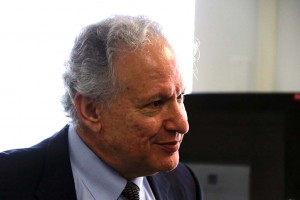
A recent J.D. Power survey concludes there are 45 million recalled vehicles on U.S. roads in need of repair.
More than 45 million vehicles roam U.S. roads with unrepaired problems subject to safety recalls since just 2013, according to a new study by J.D. Power and Associates – and the figure doesn’t include millions of vehicles subject to older recalls.
With the number of recalls reaching record levels for the last two years, the problem has been growing more serious, the consumer research company warns. In just 2015, 51 million vehicles were involved in safety campaigns, stretching the limits for manufacturers to supply replacement parts and dealers to free up the necessary service bays.
“The steady surge in recalls, combined with NHTSA’s stated goal of 100% recall completion rates have made the number of un-remedied recalls still on the road a critical statistic for automakers and dealers,” said Renee Stephens, the head of automotive operations at J.D. Power.
While the new Power study finds that there are more than 45 million vehicles with at least one unrepaired safety issue on the roads, that figure only covers recalls issued since 2013. Federal rules make it difficult to look back any further, though Stephens estimates there are likely “millions” more vehicles with unrepaired defects targeted prior to 2013 still in operation.
According to Power, the first official recalls date back to the late 1940s, but there were only a “handful,” according to Stephens, prior to the mid-1960s, when the first federal motor vehicle laws were passed. All told, about 675 million vehicles have been targeted, 437 million of those during just the last 20 years. But the pace has been ramping up rapidly.
(Fiat Chrysler facing potential legal battle regarding sales reporting. Click Here for the story.)
One reason is a shift in vehicle design. Seeking to boost so-called economies of scale and lower production costs, manufacturers often share underlying components between models and even brands. On the downside, a safety problem can now impact millions, even tens of millions of vehicles.
A good example is the Takata airbag defect blamed for as many as 15 deaths worldwide – most in the U.S. – and hundreds of injuries. Virtually every automaker, from Ferrari to Toyota, has been affected as the number of Takata airbags covered by the recall continues to grow. It is eventually expected to near 50 million or more.
The recall is so large, in fact, that manufacturers have been struggling to find replacement parts. In some instances, they’ve replaced older airbags with newer ones of the same, flawed design. Research has shown that the bags don’t malfunction for a number of years, until their inflator modules start to break down with age. But, eventually, those vehicles will have to be recalled a second time.
General Motors also struggled to keep up with the demand for spare parts when it recalled more than 2 million vehicles with defective ignition switch.
(Click Here for details about the dangers of Pokemon Go.)
“As we look at relatively small recalls versus those affecting more than 1 million vehicles,” said Stephens, “there’s a definite difference in completion rates.” The biggest recalls have averaged about 49% completion rates, according to Power data, while recalls involving less than 10,000 vehicles tend to see that figure jump to an average 67%.
Meanwhile, when older vehicles are targeted for recalls, she added, completion rates also tend to be lower, in part, “because it can be harder to contact owners.”
The older the vehicle, the more likely it has been sold, industry records show, often more than once, meaning recall notices can go astray.
Automakers order safety-related recalls for a wide variety of issues ranging from inaccurate tire inflation information to suspension components that can fail catastrophically while being driven. Obviously serious defects, such as those that can lead to vehicle fires, often have the highest completion rates, but not always. So far, barely a third of those vehicles covered by the Takata recall have been repaired and it’s unclear just how many more will be eventually.
(GM examining UK operations after Brexit vote. For more, Click Here.)
The National Highway Traffic Safety Administration has been shooting for a 100% recall repair completion rate, though NHTSA Administrator Mark Rosekind has acknowledged that goal is unlikely. But the agency is still pressing carmakers to do a better job. Beyond the carefully prescribed recall notices that go out by mail, they are exploring other options, including phone calls, text messages, e-mails and other options.


Hi Paul,
You could make a good argument that NHTSA should allow or maybe even mandate disconnection of suspect Takata airbags until replacement parts are available. But they won’t do it.
Jim Walker, A&M Specialists 1981-87
Hi, Jim,
Good to hear from you…
I believe that, under some conditions, owners might be allowed to disable their vehicle airbags until replacements are available. But I think that requires jumping through hoops. I should stress that, all told, only slightly more than a dozen people have actually been killed, and 100+ injured, by these faulty bags. And that’s over how many years in how many countries? During 2015 alone, nearly 35,000 were killed on U.S. roads. At the same time, how many were saved by their airbags. Even looking at the oldest, riskiest of these Takata airbags — and evidence is clear that the problem really is worsened by age and use in high-humidity regions — the fact is they are MORE likely to still do what was intended, reducing injuries and saving lives, than hurting or killing motorists.
Enabling people to disable their bags would likely have a net negative impact; likely result in those owners never bothering to follow through on the recall; and, worse, many would likely never bother to tell subsequent owners that the airbags were disabled, passing the problem down the used car chain.
Paul A. Eisenstein
Publisher, TheDetroitBureau.com